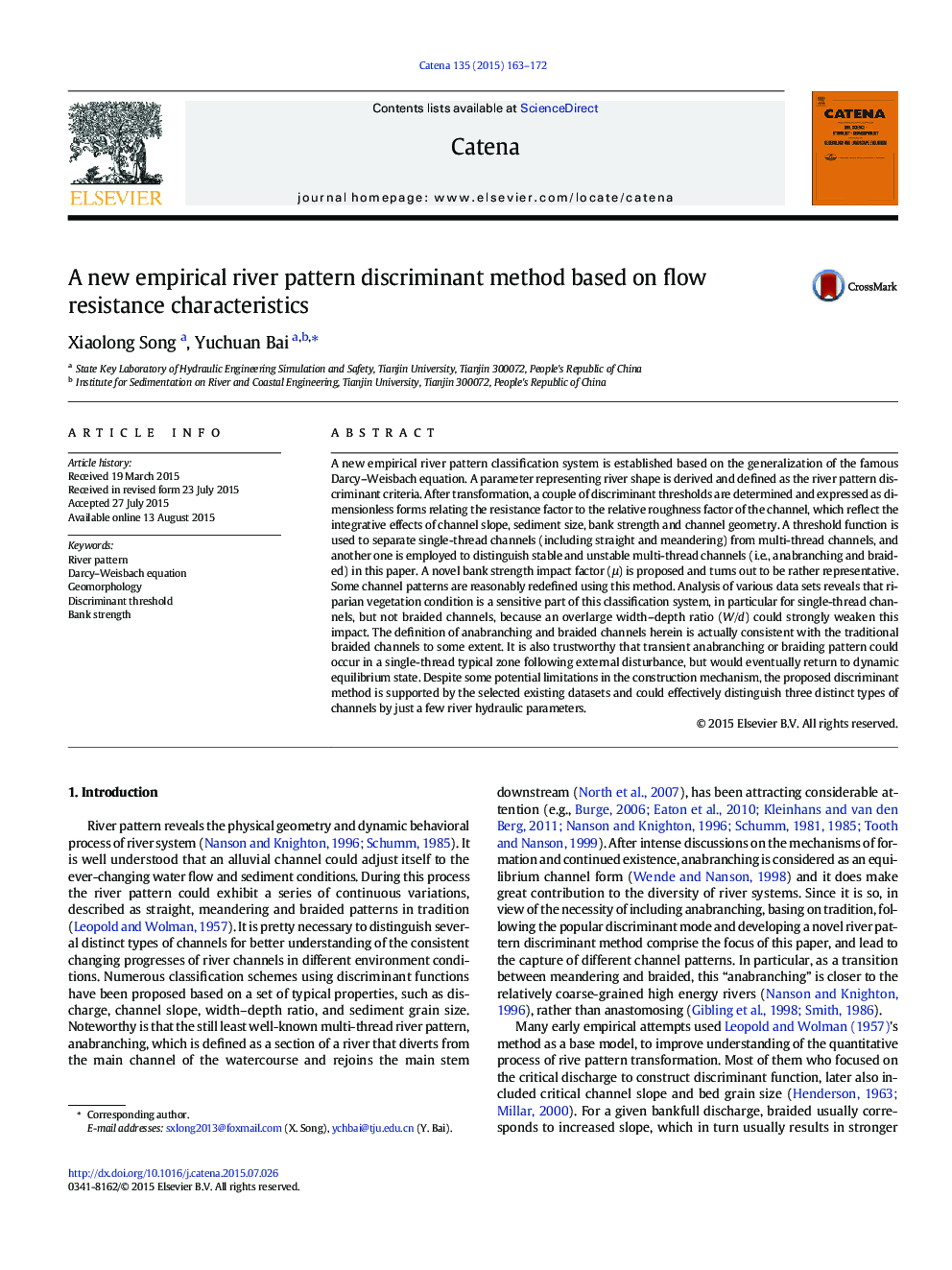| Article ID | Journal | Published Year | Pages | File Type |
|---|---|---|---|---|
| 4571088 | CATENA | 2015 | 10 Pages |
•Base on the generalization of the famous Darcy–Weisbach equation•A river shape parameter is defined as the river pattern discriminant criteria.•The discriminant thresholds are mainly influenced by bank strength.•Effectively distinguish single-thread, anabranching and braided channel
A new empirical river pattern classification system is established based on the generalization of the famous Darcy–Weisbach equation. A parameter representing river shape is derived and defined as the river pattern discriminant criteria. After transformation, a couple of discriminant thresholds are determined and expressed as dimensionless forms relating the resistance factor to the relative roughness factor of the channel, which reflect the integrative effects of channel slope, sediment size, bank strength and channel geometry. A threshold function is used to separate single-thread channels (including straight and meandering) from multi-thread channels, and another one is employed to distinguish stable and unstable multi-thread channels (i.e., anabranching and braided) in this paper. A novel bank strength impact factor (μ) is proposed and turns out to be rather representative. Some channel patterns are reasonably redefined using this method. Analysis of various data sets reveals that riparian vegetation condition is a sensitive part of this classification system, in particular for single-thread channels, but not braided channels, because an overlarge width–depth ratio (W/d) could strongly weaken this impact. The definition of anabranching and braided channels herein is actually consistent with the traditional braided channels to some extent. It is also trustworthy that transient anabranching or braiding pattern could occur in a single-thread typical zone following external disturbance, but would eventually return to dynamic equilibrium state. Despite some potential limitations in the construction mechanism, the proposed discriminant method is supported by the selected existing datasets and could effectively distinguish three distinct types of channels by just a few river hydraulic parameters.
